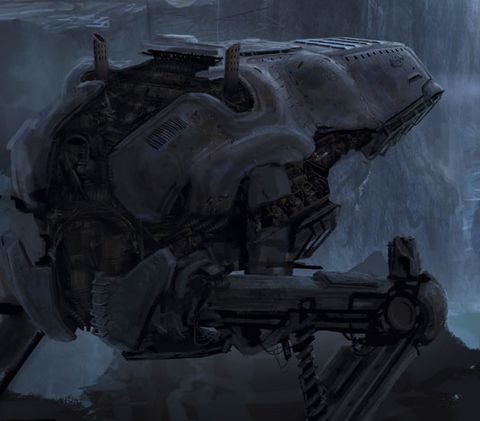visual
October 3, 2025 10:06 amVisual
Setup adds Visual Studio Code to your %PATH% environment variable, to let you type ‘code .’ in the console to open VS Code on that folder. You need to restart your console after the installation for the change to the %PATH% environmental variable to take effect https://voltagebets.org/mlb/.
Open source command line interface for Visual Studio Team Services from Windows, Linux, and Mac. Manage pull requests, builds, work items, and more directly from a command prompt or from scripts. See the docs for more information. For manual download and install steps check out these links – Windows, Linux, Mac.
These Build Tools allow you to build Visual Studio projects from a command-line interface. Supported projects include: ASP.NET, Azure, C++ desktop, ClickOnce, containers, .NET Core, .NET Desktop, Node.js, Office and SharePoint, Python, TypeScript, Unit Tests, UWP, WCF, and Xamarin. Use of this tool requires a valid Visual Studio license, unless you are building open-source dependencies for your project. See the Build Tools license for more details.
Cinematic artwork
Framed in a discussion between the characters Joe and Seligman, Lars von Trier informs almost every scene of his film with the idea of the lure. Seligman’s enthusiasm for fly fishing compares with Joe’s sexual lures to sate her own passions. But is Seligman what he seems to be? Joe constantly reminds him that she is not a good person, and that his sentiments will change once her story has been told. So to does director von Trier cast his own lure, with Seligman revealing his true nature once Joe completes her story.
It is almost an entire movie. The painter carries his easel as the car is parked by a wind turbine. Here again is one of Theo’s signature motif’s of contrasting modernity with classical imagery. There is a classic car sitting on the side of a hill, lurking behind a wind turbine. Does the car belong to a stranger, or the couple in the foreground? Once again a woman wears a striking red dress carrying a shawl on her back. The sky is lit up by moonlight and the patterns of the heavens at night are one of the most striking aspects of this particular painting.
Painting, for example, is a medium that has been around for thousands of years, while Cinema is relatively new, mainly in existence from the 20th century onwards. And, yet while paintings have inspired cinema, with their composition and drama, and influence on the framing of the moving image, likewise, movies have come to inspire paintings, such is the predominance of their influence on visual art.
Similarly, in Shutter Island (2010), Martin Scorsese makes a visual reference, utilizing paintings such as Gustav Klimt’s “The Kiss” in a reflection of the mind of a fractured protagonist, as well as his individual struggle. Such references in paintings provide depth and interpretation of the film, allowing viewers to relate on another plane.
The great art house filmmaker Michelangelo Antonioni hated when his peers talked about “writing a film.” He preferred the term “painting a film”—telling a story not with words, but colors, camera angles, and meticulously composed frames.

Classic artwork
Several noted artists made the list twice, starting with Leonardo da Vinci and Michelangelo and finishing with Claude Monet and Pablo Picasso. Artistic themes pass from mythology and religion, as exemplified by the Creation of Adam on the Sistine Chapel ceiling, to historical subject matter that touches on major moments like the French Revolution. Other works, like Vermeer’s The Girl with a Pearl Earring, are simple portraits that continue to captivate our imagination. And there’s even one, The Great Wave off Kanagawa, that represents non-Western tradition.
The Dead Toreador is a symbolic painting completed by French artist Edouard Manet, just one year before his death. It depicts the corpse of a toreador, a matador, lying on the ground after being gored by a bull. The painting is done in Manet’s signature loose, impressionistic style with thick brushstrokes and dark tones. In the background, we see a crowded bullfighting arena from which the dead toreador has been dragged.
Georges Seurat’s masterpiece, evoking the Paris of La Belle Epoque, is actually depicting a working-class suburban scene well outside the city’s center. Seurat often made this milieu his subject, which differed from the bourgeois portrayals of his Impressionist contemporaries. Seurat abjured the capture-the-moment approach of Manet, Monet and Degas, going instead for the sense of timeless permanence found in Greek sculpture. And that is exactly what you get in this frieze-like processional of figures whose stillness is in keeping with Seurat’s aim of creating a classical landscape in modern form.
At nearly 12 feet tall, the epic painting revolutionized military portrait traditions with its dramatic Baroque style and almost cinematic lighting effects. Originally titled “Officers and Men of the Company of District II under the Command of Captain Frans Banning Cocq”, its more popular name derives from a layer of varnish adding an unintended darkened tone over two centuries.
Frans Hals is one of the best portrait artists of the seventeenth century and boasts a spontaneous and lively style of portraiture, which can also be seen in his painting, The Laughing Cavalier. The painting is regarded as one of his masterpieces with extensive attention to detail. What makes the painting even more interesting is that the person in the portrait painting is not a cavalier and not even laughing.
Frederic Leighton was a genius academic painter who was part of the Aestheticism movement. Aestheticism is centered on the doctrine that art exists for its beauty alone and doesn’t need to serve any political, didactic, or other purposes.
Categorised in: Uncategorized
This post was written by EuRp._.PrED_ChAllEnGe



